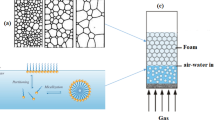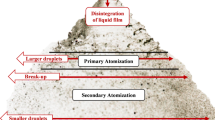Abstract
The present paper reports the interaction effect of yarn twist, yarn count and number of plies on wicking behaviour of plied cotton yarn. A three-variable factorial design technique proposed by Box & Behnken was used to investigate the combined interaction effect of the above variables. Both the vertical as well as horizontal wicking experiments were carried out with liquids of varying surface tensions, like distilled water, saline water and petrol. Each wick samples were subjected to nine different types of wicking related tests. The yarn count and number of plies in the cotton wick was found to play major role in wicking related properties, whereas the effect of twist in plied cotton wick was not that prominent when the twist per unit length of single and plied yarns were the same and in opposite direction. The rate of vertical wicking for saline water was found to be significantly lower than that of distilled water. The rate of horizontal wicking for distilled water was less than that of vertical wicking of distilled water. Use two or three parallel strands instead of one resulted in marked increase of vertical wicking.
Similar content being viewed by others
References
E. Kissa, Text. Res. J., 66, 660 (1996).
H. Bogaty, N. R. S. Hollies, J. C. Hintermaier, and M. Harris, Text. Res. J., 23, 536 (1953).
R. S. Norman, M. K. Martha, and H. Bogaty, Text. Res. J., 26, 829 (1956).
P. R. Lord, Text. Res. J., 44, 516 (1974).
A. K. Sengupta and H. V. S. Murthy, Indian J. Text. Res., 10, 155 (1985).
R. Chattopadhyay and A. Chauhan, “Wicking Behaviour of Compact and Ring Spun Yarns and Fabrics”, in Seminar on Comfort in Textiles, p.20, Dept. of Textile Technology, IIT Delhi, New Delhi, India, October, 2004.
P. K. Chatterjee, “Absorbency”, Vol. 7, pp.123–148, Elsevier Science Publications B. V., NY, 1985.
G. E. P. Box and D. W. Behnken, Technometric, 2, 455 (1960).
P. R. Harnet and M. M. Mehta, Text. Res. J., 54, 471 (1984).
A. P. Desilva, C. Greenwood, S. C. Anand, D. H. Holmos, and N. Whatmough, J. Text. Inst., 91, 383 (2000).
E. W. Washburn, “The Dynamics of Capillary Flow”, Phys. Rev., 27, 273 (1921).
Author information
Authors and Affiliations
Corresponding author
Rights and permissions
About this article
Cite this article
Das, A., Jain, A. & Pant, A. Study on the liquid flow behaviour of cotton wick. Fibers Polym 9, 176–186 (2008). https://doi.org/10.1007/s12221-008-0029-x
Received:
Revised:
Accepted:
Published:
Issue Date:
DOI: https://doi.org/10.1007/s12221-008-0029-x




